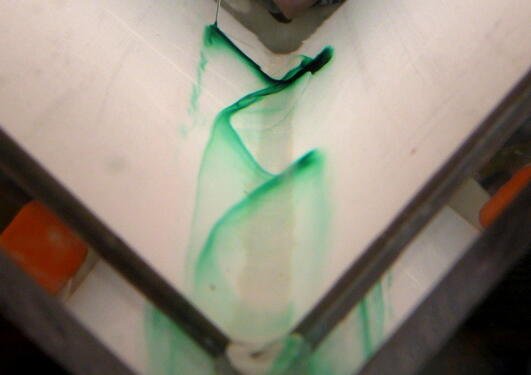Ocean mixing
Research on processes including boundary layer turbulence, internal-wave induced mixing, tide-topography interaction, and entrainment and mixing of overflows.

Hovedinnhold
Mixing is the irreversible change in water properties such as temperature, salt, gas and nutrients, as a result of stirring by mechanical forces (wind, tides) or destabilizing buoyancy forces (cooling or ice freezing at sea surface). Mixing plays a pivotal role in climate variability and change. The Arctic ice cover, a crucial component of the Earth climate system, depends on a delicate heat balance in which the oceanic vertical heat flux (implied by mixing of warm deeper waters upwards towards the ice) is important. The vertical mixing controls the rate at which nutrients become available to primary production and the vertical exchanges of the carbon system constituents. Boundary mixing on continental slopes and other topographic features help maintain the ocean stratification by extracting energy from tides and converting it into increased potential energy via turbulence. Mixing, through entrainment, of dense overflows maintains the deep part of the ocean circulation which in return carries heat toward the Arctic.
Climate models, in the form of coupled atmosphere-ocean general circulation models, are the main tools to study present-day climate, its variability and projections into the future. Ocean mixing is poorly represented in modern ocean general circulation models. The description of water mass formation and large-scale ocean circulation is sensitive to how the vertical mixing is implemented in models. Observations covering both the small (turbulent) scales and larger scales help to understand the link between the large scales and the scales at which energy is ultimately dissipated, and to improve the parameterization of this link.
In the physical oceanography group of the Geophysical Institute, we investigate ocean mixing processes and their links to the climate at high-latitudes through improved observational techniques and process studies.

